Minoxidil For Men - Everything You Need To Know
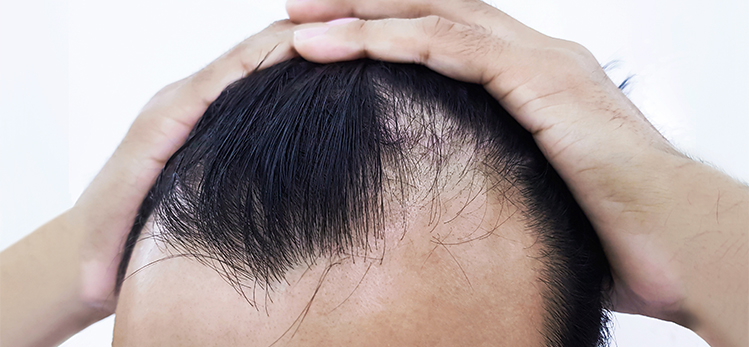
If you are hearing about this drug just now, you are in for a great surprise. Minoxidil has become a popular drug for treating male pattern baldness. Hair loss can bring about not just physical changes in your appearance, it has also been known to affect you emotionally as well. Blame it on stress, an improper diet, or your genetic makeup, hair loss can be really stressful to deal with.
A little ray of hope is this popular drug Minoxidil, which is often prescribed to those people who suffer from patterned hair loss leading to baldness. Minoxidil is known for its ability to arrest hair fall and induce new hair growth in patients with androgenetic alopecia. But there is more to know about this drug than just this. So, here is a guide to everything useful there is to know about Minoxidil.
Hair Loss in Men
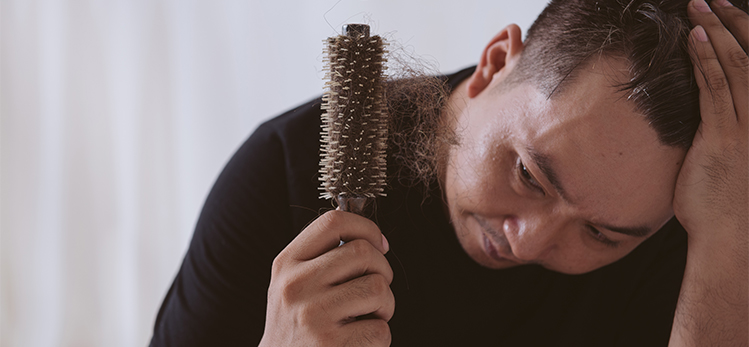
Often hair loss in men causes male pattern baldness. This is characterized by a receding and M-shaped hairline, thinning of hair, and baldness in severe cases. Medically it is also called androgenetic alopecia and is caused due to the actions of androgens.
Androgens are important hormones that are responsible for mens sexual development. Other than this, androgens also regulate the growth of hair and sex drive in humans. When the body develops an excessive response to androgens, it can lead to androgenetic alopecia.
To diagnose a patient with androgenetic alopecia, a doctor will need their complete medical history with any recent changes in life or illnesses of the person. The doctor may also ask for family medical history since androgenetic alopecia has a genetic factor attached to it. Hair loss that is more progressive and consistent with an M pattern characteristic of the hamilton scale is often androgenetic alopecia.
However, if the patient experiences patchy hair loss or overall thinning of hair, there may be other reasons associated with this hair loss like alopecia areata or telogen effluvium, etc. Your doctor may then prescribe a suitable treatment like Finasteride to treat the hair loss.
Causes For Hair Loss
Hair loss can be a direct symptom of so many medical and emotional conditions of a person. The treatment for hair loss may vary for every individual depending on the causative factor of his hair loss. Here are some of the most common causes of hair loss in men:
Androgenetic Alopecia: Caused due to excessive response to androgens. However, there is a factor of genetic predisposition to androgenetic alopecia.
Alopecia Areata: It can cause hair loss by an autoimmune condition that attacks the hair follicle causing an unpredictable form of hair loss.
Telogen Effluvium: This causes temporary hair loss due to a sudden shock - emotional or physical to the body. It could be due to recent surgery, loss of a loved one or certain medications, etc.
Trichotillomania: A condition where people compulsively pull out their hair. This results in patchy hair fall.
Improper diet: If your diet lacks vital nutrients like vitamins and minerals, it can lead to excessive hair shedding.
Secondary syphilis: Hair loss can also be triggered by a sexually transmitted infection like secondary syphilis.
Physical and chemical agents: Hair loss can also be caused due to physical and chemical agents. A doctor can better understand this by taking a thorough history.
Other reasons: There are many other reasons for hair fall like Traction alopecia, Congenital hair shaft disorders, Scarring alopecia, Inflammatory dermatoses, Infection, Congenital defects, etc.
Minoxidil For Your Scalp
Topical Minoxidil is a CDSCO-approved drug for treating androgenetic alopecia. It is a prescription drug. Minoxidil is a vasodilator, and so it works by widening blood vessels and leading to an increased supply of blood to the scalp. This has been known to improve hair growth in people with male or female pattern baldness, although we still do not clearly understand how it encourages hair growth. Still, Minoxidil has shown some great results in patients with androgenetic alopecia.
Although the drug has many benefits, Minoxidil is not a one-time solution. It needs to be used regularly for consistent results. According to the doctors prescription, you may use either a 2% or 5% solution and apply it topically to the affected area.
Minoxidil will work slowly by reducing hair fall and encouraging hair growth. However, the time taken for results to appear may vary depending on every individual case. In conjunction with Minoxidil, your doctor may also suggest other hair therapies or oral drugs like Finasteride.
Although Minoxidil is safe for use, there are many misconceptions about it that may or may not be true. So here are the myths about Minoxidil debunked.
1. Myth: Minoxidil can cause excessive hair shedding.
Fact: False. During the first two months patient may lose or shed more hair than usual. This will be especially true, in the first 2-4 weeks as the follicles make way for new growth. This is actually a sign that Minoxidil is working and hair follicles are coming back to life
2. Myth: Minoxidil has no side effects.
Fact: False. Although Minoxidil has no severe side effects, patients may experience some mild side effects such as irritation & itching after its use.
3. Myth: Minoxidil causes loss of libido.
Fact: False. There is no medical evidence that Minoxidil affects your libido or sexual function in any way. In a study, however, the use of Finasteride showed temporary loss of libido but not Minoxidil.
4. Myth: Minoxidil must only be used on its own.
Fact: False. Depending on the cause of hair fall, your dermatologist will prescribe you the use of Minoxidil either on its own or along with other oral or topical drugs.
Side Effects Of Minoxidil

Minoxidil does not cause any severe side effects. However, if you notice any of the given side effects, you should see a doctor and get yourself evaluated at the earliest. Side effects of Minoxidil include:
Burning sensation
A feeling of stinging in the scalp
Redness at the site of application
Dermatitis
Headaches
Hypertrichosis
Growth of excess facial or body hair
In rare cases, skin absorption may cause allergic reactions like dizziness, irregular heartbeat, chest pain, fainting, tiredness, unusual weight gain, and difficulty breathing, especially when lying down.
It is very rare to develop any severe health complication or allergic reaction to the application of Minoxidil, but if you do observe a side effect after its use, you must consult your doctor and discontinue its use immediately.
Minoxidil Safety Guide

While using this drug is considered mostly safe, here are some safety tips to follow for using Minoxidil.
Do not apply Minoxidil on the face.
Wipe off any excess solution that may have trickled to your face or forehead.
While using foam, do not bring the pressurized foam can near a flame.
Do not try to break the pressurized foam can.
Do not use Minoxidil on an inflamed scalp.
Keep it away from children.
Do not shampoo your hair for at least 4 hours after applying Minoxidil.
Do not apply Minoxidil on freshly colored or chemically treated hair.
Conclusion
While Minoxidil is a great drug to treat male pattern hair loss, it cannot completely cure male pattern baldness if the cause of the hair fall is not treated. Minoxidil is best utilized with a proper diet and overall treatment of the underlying health condition that may be inducing hair fall.
In case of a diagnosed male pattern hair loss, your dermatologist may prescribe Minoxidil in combination with other treatments for therapy for best results. With proper health, hair care, and regular use of Minoxidil, hair loss can be reduced to a great extent, and baldness can be delayed.
Myth Busters HairFall
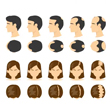
Androgenetic Alopecia - Everything You Need To Know
Have you been experiencing excessive hair fall over a prolonged period of time? It could be an early sign of androgenetic alopecia. It is a hair loss disorder common in both genders and can lead to progressive thinning and even baldness in some patients if not caught and treated early.

How To Make Hair Grow Faster For Men
A head full of healthy hair is a matter of confidence. Hair has its own mechanism of growing and shedding, and it is when this mechanism is thrown off that growth is hindered. Especially in the case of males, hair growth faces a lot of hiccups that can easily be managed.
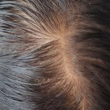
Female Pattern Baldness - Causes & Treatments
Have you suddenly noticed an increase in the number of hair strands on your pillow in the morning? Or is your ponytail getting thinner by day? Well, you might be suffering from female pattern baldness. While that does sound scary, identifying it early on is key to treating this condition effectively. So keep reading to know what this is, how you can identify it, and most importantly, what treatments you can avail of to get your beautiful lustrous hair back.
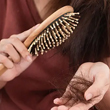
What Are The Reasons For Hairfall?
Almost everyone experiences some amount of hair thinning over the years. Shedding around 50 to 100 single strands of hair per day is considered normal. However, losing more than 150 strands a day, experiencing sudden thinning, or developing circular bald patches on your scalp are reasons for concern. Hair loss occurs when new hair doesn’t grow fast enough to replace the amount of hair you lose daily. Hair can fall due to various reasons, with hereditary hair loss and poor nutrition being the most common hair fall reasons.

Expert Approved Tips For Hair Growth
What can be more debilitating than seeing hundreds of hair strands shedding from your scalp every time you brush your hair? Also, excessive molting occurs during seasonal changes that can be very stressful for you. Although it’s okay to lose between 50-100 strands every day, according to the American Academy of Dermatology, the problem occurs when you start shedding more than normal. But that doesn’t mean you have to feel helpless as there are ways to grow your hair back. Even if you are coping with baldness or alopecia, certain hair growth tips from dermatologists can come to your rescue. Read on to discover how these tips can be your savior when abnormal hair fall problems are in sight.
Trending Videos
+ 11 Sources
LMRC - GGI-CO-A2-DMA-300026127-300026127-WM-J21-282
© 2021 Dr. Reddy’s Laboratories Ltd. All rights reserved.